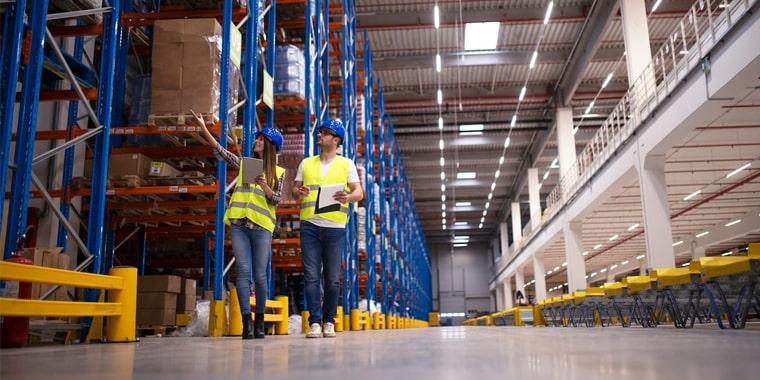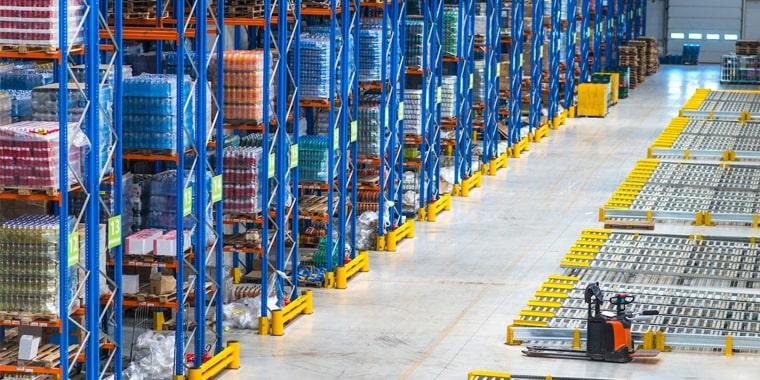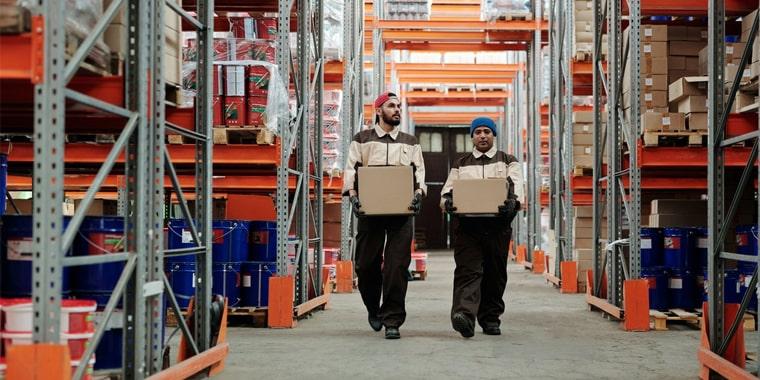
Businesses today have to be flexible and agile so that they can respond to fluctuating customer demands quickly and with less inventory.
Stockpiling inventory is not the smart way to do business, as it ties up too much money, increased lead times, and leads to opportunity costs.
Money invested too heavily in inventory means less working capital your business has to spend for marketing efforts, innovation, modernization, paying off loans, expansion, and so on.
Ergo, inventory reduction should be a top priority for inventory managers.
ALSO READ: Inventory Management Problems and Solutions
Often, there is so much excess inventory that a lot of it becomes obsolete and can’t be sold.
It can also indicate systemic, deep-rooted, pan-organization problems that can cost the business a lot.
Poor systems and processes can lead to improper demand forecasts, inadequate specifications for orders, poor quality, haphazard production schedules, lengthy cycle times, improper KPIs, and so on – and these can have ripple effects.
ALSO READ: Importance of ROP
For example, long lead times usually necessitate long-range forecasting, which is in itself not accurate; this means actual demand is not what was predicted, meaning unsold inventory, and so on.
The cycle gets repeated, impacting cash flow, customer service, and profitability.
We can think of three main reasons – it helps prevent inventory shrinkage, minimizes carrying costs, and maximizes fill rate.
Every business should aim to transfer inventory to customers as quickly as possible before they get obsolete, spoilt, or stolen.
When you reduce inventory levels, it shows that you have implemented warehousing procedures effectively and can predict demand properly; this leads to a high fill rate and optimal inventory.
ALSO READ: Guide on ROI on ERP Implementation

When you reduce inventory levels, your business can enjoy several advantages:
When you don’t spend a huge sum on purchasing inventory, you can use that money for activities like marketing, research, expansion, and so on.
You also have lower costs related to shipping, insurance, utilities, taxes, and labour.
There will be no cause to worry about loss, spoilage, and theft as the inventory will be moved quickly.
Managers can ensure that only minimal funds are invested in goods that sell slowly and that you avoid dead stock.
By ordering frequently, you can also compare prices and get discounts on seasonal clearance, etc.
In case you want a business loan, showing lower administrative and business expenses demonstrates good management skills to creditors, increasing your chances of getting a loan.
ALSO READ: Different Ways to Improve the Procurement Process
If you have intense competition, you can divert the funds saved from inventory reduction to pricing your products competitively so that you can sell more.
You can tap into new markets and expand your business, positioning yourself as a market leader in your region or industry.
By reducing expenses from low inventory, you can increase profitability; this money can be ploughed back into your business to expand it, or you can simply enjoy the increased income.
ALSO READ: Advantages of Batch Picking

The fundamental idea of lean manufacturing methods is driving supply and production from actual customer demand, which means having zero inventory.
This is not always possible, so then you try to achieve minimal inventory.
Supposing you have a constant demand, your vendors can deliver supplies that are adequate for production for just that day.
Materials are taken to the production floor straight from the loading dock, and finished goods straight to the shipping department, where they are shipped out the same day.
But we know that in reality, this is not possible – variation is bound to happen, as many external factors also impact demand.
You will need to balance the advantages of reducing inventory with the risks of inadequate inventory and handle the variability.
ALSO READ: What is Cross Docking?

Most managers agree that it is essential to have lean inventory to prevent funds being tied up in unprofitable heads.
However, most of them are unsure about the causes of excess inventory and hold preconceived notions regarding inventory management.
Let’s take a look at a few inventory reduction strategies:
The absence of proper control does cause excess stocking, but the underlying reason is often the desire of management to avoid material shortage at all costs; they are not particularly alarmed by high inventory levels.
Ergo, you need to make those in charge aware of the need to reduce inventory.
The desire to hold more stock than necessary is also often due to inefficient cross-functional business processes.
So, what you need to do, is identify the root cause and fix that, so that you won’t need buffer stocks, and can reduce inventory.
Without rooting out the cause, reducing inventory may compound the underlying problem.
ALSO READ: Strategies with Inventory Batch Tracking

Obsolete stock is inventory that has little market value currently because it is out of vogue or has been made redundant due to innovations and improved products.
Management may be reluctant to write it off and suffer a minor loss but they don’t realize that the obsolete stock takes up space and doesn’t earn anything.
That space could be used to stock fast-selling inventory, which will improve cash flow and profitability.
You could try and sell it off at a nominal price and get back some of your investment.
If you have multiple SKUs for the same product, it means excess stock.
ALSO READ: What is Stock Adjustment and Stock Transfer?
Let’s suppose you custom make the same product for a few customers; this could result in multiple SKUs for essentially the same product, with a different SKU for each customer.
What you could do instead is customize the product only prior to shipping – giving you a single SKU for that product.
Simpler inventory management, and lower inventory!
You could also have a situation where a product is available in packs of 4, 6, 10, and 15 – triple A battery cells, for example.
Your market research tells you that the 4 and 10 packs are much more popular; so, you eliminate the rest.
This way you can trim your inventory significantly.
Getting rid of obsolete stock and minimizing SKUs frees up funds and warehouse spaces – now get your profit-earning products there.
ALSO READ: ABC Analysis in Inventory Management
Reducing lead times significantly can mean no requirement for buffer stock; it can also help you provide better customer service and improve product quality.
When you re-engineer and streamline your supply chain, you can free up funds, reduce cycle times, lower expenses, improve profitability, and reduce time to market in addition to reducing inventory.
It is important to work on reducing the order-to-delivery cycle to enhance overall efficiency in your business.
This can be achieved by improving communication with vendors and customers and leveraging technology.
The right tools can help you set alerts to place orders and notify your vendors regarding delivery dates.
Having a good rapport with a few suppliers will help you get better service like quicker deliveries, reduced rates, better product quality, etc.
ALSO READ: How Can you Track UOM?
When you don’t schedule your production properly, it can have a cascading effect, like imbalances in product flow, and decreased throughput.
In turn, this leads to high inventory, inconsistent output, poor customer service, long cycle times, and the like.
Unfortunately, quite a few manufacturers reward activities that lead to excessive inventory.
Let us take this example: measuring utilization, standard hours produced, and efficiency in production – mainly to absorb overheads, could lead to producing parts that become part of your inventory even when there isn’t a proper reason for doing this.
ALSO READ: What is Storage Cost of Inventory?
When you measure the sales function properly, and hence operate on the absolute booking amounts without keeping in mind the timing or product mix, you get an excess word in progress inventory, or finished goods inventory, while your customer service suffers.

Often, manufacturers work on unreliable long-range forecasts and use this data to determine the stocking levels of raw materials and finished products.
Thanks to these inaccurate figures, business performance overall is impacted negatively.
Companies that depend on the ‘push’ system of inventory management are more likely to stock high levels of products or materials.
If you choose the ‘pull’ system of inventory management, you will be able to divert more working capital towards more essential activities.
When your production process is efficient, the products will be manufactured quickly enough to prevent them from becoming a liability.
Your efficient management of the supply chain is what matters here.
ALSO READ: Understocking vs Overstocking in inventory

To have a lean warehouse, it is imperative that you are efficient.
One way to achieve this is through visual communication: mark SKUs prominently on bins and shelves, mark aisles, traffic lanes, and so on, so that there is no confusion for anyone working in the warehouse.
Use magnetic labels and signs so that they can be changed easily if you need to make adjustments frequently to your product mix.
ALSO READ: What is Pipeline Inventory and Decoupling Inventory?
To mark things like the floors and shelves, make sure that you use durable and tough permanent labels which don’t fade quickly; this can waste employees’ time in trying to figure out what goes where.
If you have inventory items that have to be refrigerated or frozen, or stored outdoors, make sure you have labels that can withstand extreme temperatures and outdoor weather conditions.
If your production schedules are long, it goes without saying that you may need higher production levels even if demand is low. When the manufacturing schedule is not flexible, high production levels are maintained to absorb the overheads.
While this may look good on paper, it leads to more expenses and inefficiencies – they are just covered in inventory.
It is imperative to be flexible in your manufacturing and operations to improve responsiveness to customer demands and minimize inventory.
ALSO READ: Physical Stock Verification and Its Advantages
Final Thoughts
Today’s customer is not always about the lowest price but getting value out of a product – good quality, quick delivery, exemplary service, and then eventually, a fair price. If a business is not able to keep up with these expectations, they stand to lose customers and business.
Tranquil Cloud ERP has a robust inventory management module that can help you efficiently manage your inventory, in addition to many other things. Find out how – schedule a demo at your convenience, and see for yourself how it works.